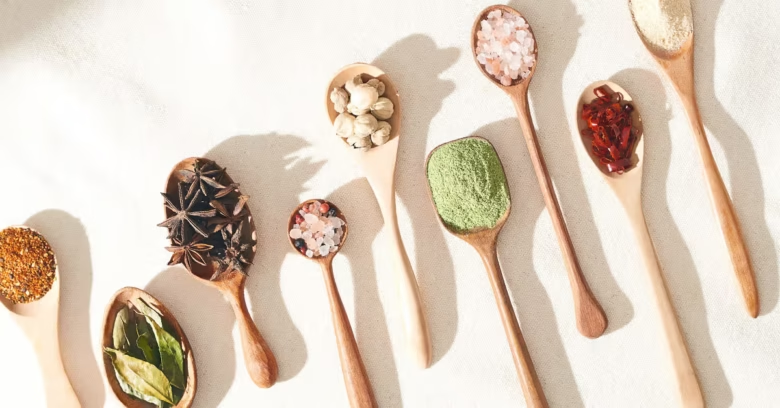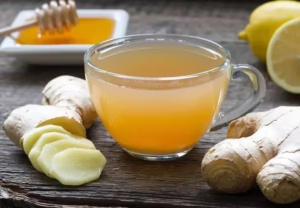Many people turn to herbal remedies because they want gentle, natural ways to support their health. Yet, with so many herbs and folk remedies out there, it’s easy to feel overwhelmed or unsure about what actually works. Herbal medicine has been part of human healing for centuries, and many of these natural solutions still have a place in our modern wellness routines. The key is knowing which herbs are most useful and how to use them safely.
This guide will walk you through top herbal remedies for everyday ailments, from headaches and colds to stress and indigestion. Each section will explain the benefits of the herb, how to use it, and practical tips for adding it to your daily life. You’ll also learn ways to make these remedies at home without expensive equipment, making herbal care accessible and affordable for anyone.
1. Ginger for Nausea and Digestion
Ginger is one of the most versatile herbal remedies. It helps with nausea, bloating, and mild stomach discomfort. People often turn to ginger tea when they feel queasy from motion sickness or a mild stomach bug.
You can make ginger tea at home by slicing fresh ginger root and boiling it in water for 10–15 minutes. Drinking it warm eases nausea and stimulates digestion. For travel, you can carry dried ginger candies or capsules. Avoid high doses if you have gallstones or take blood-thinning medication, as ginger can affect blood clotting.
2. Peppermint for Headaches and Indigestion
Peppermint works as both a refreshing drink and a soothing herbal medicine. Its cooling effect helps ease tension headaches, and its relaxing impact on digestive muscles makes it useful for bloating or mild stomach cramps.
For headaches, dilute peppermint essential oil with a carrier oil and apply it to your temples. For indigestion, drink peppermint tea after meals. Avoid peppermint if you have acid reflux, as it can relax the stomach valve and worsen symptoms. Fresh peppermint leaves can be grown easily in pots, making it a handy herb to keep in your kitchen.
3. Chamomile for Stress and Sleep
Chamomile is well-known for its calming properties. A cup of chamomile tea before bed can help you wind down, relax tense muscles, and encourage better sleep. It also helps soothe mild anxiety during the day.
You can make chamomile tea from fresh flowers or dried ones available in most grocery stores. Let it steep for 5–10 minutes for maximum effect. People with ragweed allergies should be cautious, as chamomile can cause similar allergic reactions. Chamomile can also be used as a gentle mouth rinse for gum irritation.
4. Turmeric for Inflammation
Turmeric contains curcumin, a compound with strong anti-inflammatory properties. It helps with joint pain, mild arthritis symptoms, and overall immune support. In many cultures, turmeric milk (also called golden milk) is a go-to remedy for colds and aches.
To make golden milk, mix half a teaspoon of turmeric powder into warm milk, along with black pepper to enhance absorption. You can also add honey for sweetness. Cooking with turmeric regularly is a great way to get its benefits without taking supplements. If you’re on medication for blood clotting or gallbladder issues, speak to your doctor before taking high doses.
5. Garlic for Immunity
Garlic is a natural immune booster and has been used for centuries to fight infections. Fresh garlic contains allicin, a compound with antibacterial and antiviral properties. Eating garlic regularly may reduce the duration of colds and support heart health.
For best results, use raw garlic, as cooking reduces its active compounds. You can mince fresh garlic and add it to salads, dips, or spread on toast with olive oil. If you dislike the strong taste, garlic capsules are available. Be cautious with large amounts if you take blood thinners, as garlic can increase bleeding risk.
6. Echinacea for Colds and Flu
Echinacea is often taken at the first sign of a cold to shorten its duration. It helps stimulate the immune system, making it more effective at fighting off infections. Many people keep echinacea tea or tincture on hand during cold and flu season.
To use it, steep echinacea tea for 10 minutes or follow the dosage instructions on a tincture bottle. It works best when taken at the very start of symptoms, not after the illness is in full swing. Echinacea is generally safe for short-term use but should not be taken continuously for long periods.
7. Aloe Vera for Skin Irritation
Aloe vera gel is a natural remedy for burns, sunburns, and minor cuts. It cools the skin, reduces redness, and speeds healing. Fresh aloe leaves are easy to keep at home, and the gel inside can be applied directly to the skin.
To use, slice open a leaf and scoop out the gel. Apply it to the affected area two or three times a day. You can also find store-bought aloe gels, but choose ones without added alcohol or fragrances. Aloe juice can also be taken internally in small amounts for digestive support, but only use food-grade products.
8. Lemon Balm for Anxiety and Restlessness
Lemon balm has a light lemony scent and is known for its calming effects. It can ease mild anxiety, promote relaxation, and help with insomnia. It also supports digestion and can relieve mild cramps.
You can make lemon balm tea using fresh or dried leaves. Drinking it in the evening helps prepare your body for restful sleep. Lemon balm grows well in home gardens, so it’s a great herb to plant if you enjoy fresh tea. Avoid large amounts if you take thyroid medication, as it may affect thyroid function.
9. Thyme for Respiratory Health
Thyme is a powerful herb for coughs and congestion. It contains compounds that help loosen mucus and fight respiratory infections. Thyme tea is a traditional remedy for sore throats and bronchitis.
To make thyme tea, steep fresh or dried thyme in hot water for 5–10 minutes. You can add honey to soothe the throat. Inhaling steam infused with thyme leaves can also ease congestion. Thyme is a hardy plant that grows well in sunny spots, making it easy to have a fresh supply year-round.
How to Stay Motivated with Herbal Healing
When starting with herbal remedies, consistency matters. Keep a small herbal kit at home with your most-used herbs so they’re easy to grab when needed. Make drinking herbal teas part of your daily routine, even when you’re not sick, so you maintain the habit.
Track your progress by noting which remedies work best for you. Join online herbal groups or community classes to exchange tips and learn more. Reward yourself for sticking with healthy habits—whether that’s treating yourself to a new tea blend or a relaxing evening ritual. Remember that natural healing is a long-term approach, not an instant fix.
Final Thoughts
Herbal remedies offer simple, effective ways to manage everyday ailments without relying solely on synthetic medicines. By learning how to use a few key herbs, you can build a natural toolkit that supports your health year-round. Start small—maybe with ginger tea for digestion or chamomile for better sleep—and add more as you gain confidence.
The most important thing is to stay consistent, listen to your body, and use herbs safely. With time, you’ll discover which natural remedies work best for you and enjoy the peace of mind that comes from caring for your health the gentle way.




